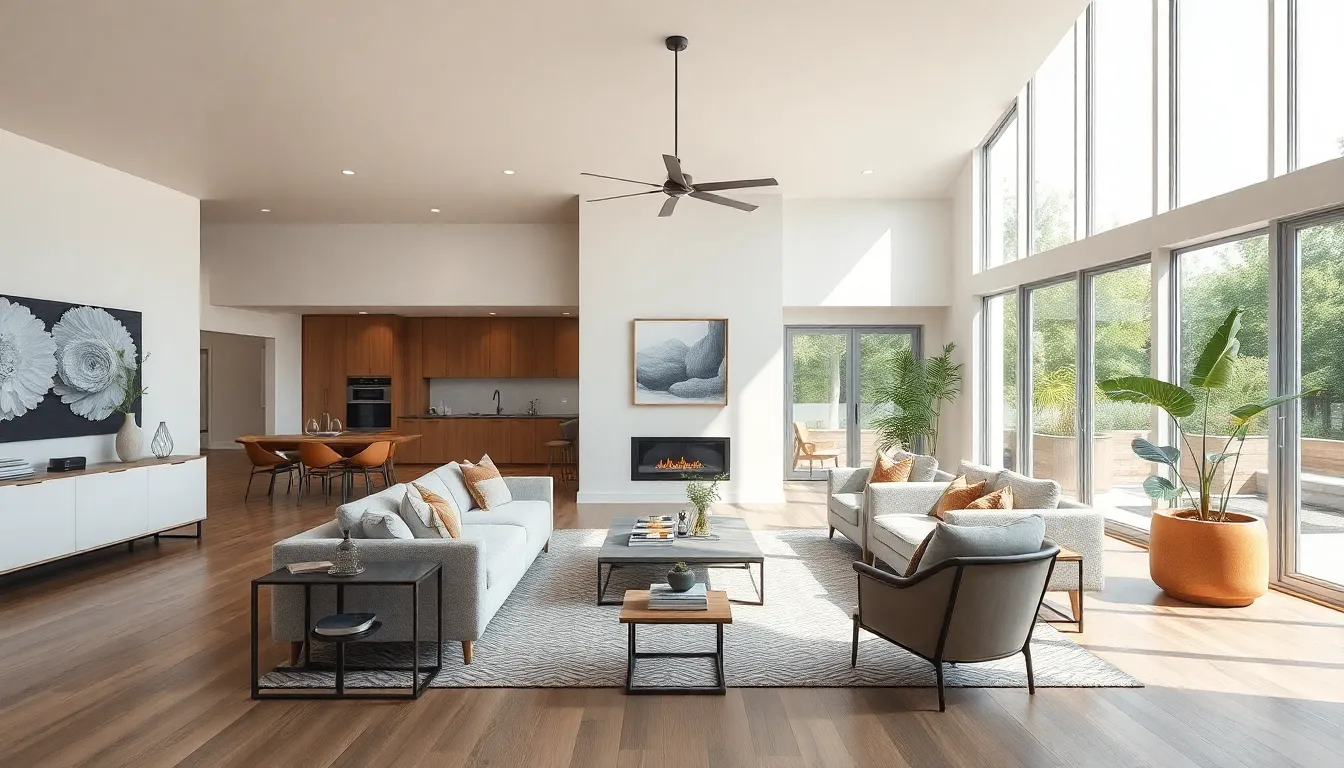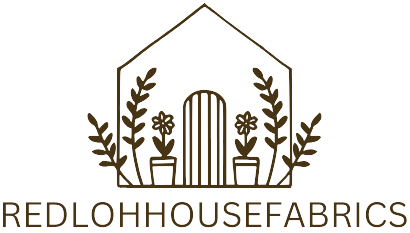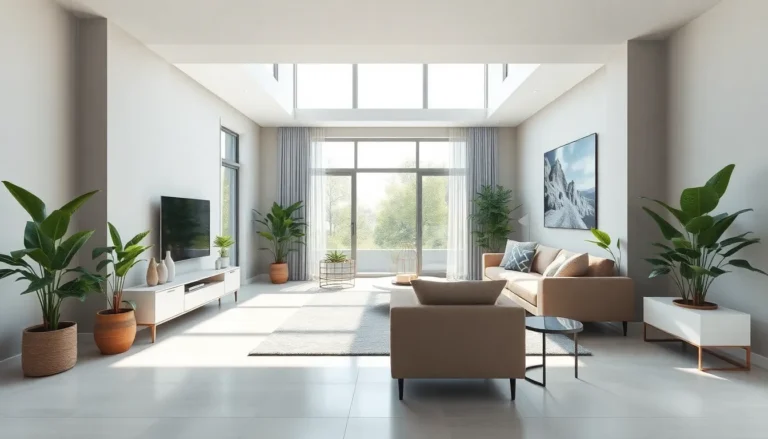Table of Contents
ToggleDesigning a dream home is more than just choosing paint colors and furniture; it’s about creating a sanctuary that reflects personal style and meets unique needs. With endless possibilities, the journey of turning a vision into reality can be both exciting and overwhelming. Whether it’s a cozy cottage or a modern masterpiece, each decision plays a crucial role in crafting the perfect space.
Understanding the essentials of home design can empower anyone to make informed choices. From layout and functionality to aesthetics and sustainability, every aspect contributes to the overall experience of living in a dream home. This guide will explore key elements to consider, helping to transform aspirations into a tangible living space that truly feels like home.
Understanding Your Vision
Understanding your vision is crucial for designing a dream home. This stage involves deep reflection on personal preferences, lifestyle, and future needs that shape the ideal living space.
Defining Your Lifestyle
Defining lifestyle traits influences home design choices. Consider the following aspects:
- Daily Routine: Identify how the daily schedule affects space usage.
- Occupants: Account for family size or guests often present in the home.
- Hobbies and Interests: Pinpoint activities requiring specific spaces, such as home offices, craft rooms, or fitness areas.
- Entertaining Preferences: Assess the importance of socializing, requiring open layouts, or formal dining areas.
- Work Needs: Evaluate space for remote work setup or designated quiet areas.
Exploring these factors provides clarity on how to tailor the design to support an individual’s lifestyle.
Identifying Essential Features
Identifying essential features elevates a design plan. Focus on these critical components:
- Room Functionality: Determine primary purposes for each room, emphasizing features enhancing usability.
- Layout Preferences: Choose between open-concept designs or traditional room separations based on needs.
- Natural Light Access: Incorporate windows or skylights to foster a bright, welcoming atmosphere.
- Storage Solutions: Prioritize built-in storage or custom cabinetry to maximize space efficiency.
- Sustainability Aspects: Decide on eco-friendly materials and energy-efficient systems that align with personal values.
Recognizing these features curates a home that aligns with established lifestyles and individual visions.
Key Design Elements

Designing a dream home hinges on effective choices around key elements like style and functionality. Understanding these elements helps in crafting a space that truly resonates with personal aspirations.
Choosing the Right Style
Selecting the right style significantly impacts home aesthetics. Traditional styles often feature intricate details and classic patterns, while modern styles lean towards clean lines and minimalism. Contemporary designs offer flexibility, merging various trends for a unique look. Selecting a style involves assessing personal preferences, considering historical architecture, and evaluating the surrounding environment to ensure cohesion.
Maximizing Space and Functionality
Maximizing space and functionality enhances everyday living experience. Open floor plans can create a sense of spaciousness and facilitate movement. Multifunctional furniture, such as sofa beds or expandable tables, optimizes small areas. Smart storage solutions, like built-in shelves or under-stair cabinets, provide organization without cluttering spaces. Additionally, leveraging natural light by incorporating large windows or skylights can improve ambiance and reduce energy costs while enhancing the home’s overall functionality.
Budgeting for Your Dream Home
Budgeting for a dream home requires thoughtful planning and accurate estimations. Understanding financial implications helps in making informed decisions during the design and construction process.
Estimating Costs
Estimating costs involves several factors. Key elements include land acquisition, construction materials, labor expenses, and interior furnishings. The following components help outline potential expenses:
| Cost Component | Description |
|---|---|
| Land Purchase | Price varies by location and size. |
| Construction Materials | Costs depend on quality and quantity. |
| Labor | Professional fees vary based on expertise. |
| Permits | Fees for necessary building permits. |
| Interior Finishing | Select finishes early for precise budgeting. |
Accurate cost estimations strengthen the home design vision and ensure budget adherence.
Tips for Saving Money
Saving money during the home design process is achievable with strategic choices. Consider the following tips:
- Prioritize Needs: Focus on essential features first to prevent overspending.
- Research Materials: Compare prices for quality materials, allowing room for negotiation.
- DIY Projects: Take on manageable projects, such as landscaping or painting, to reduce labor costs.
- Flexibility: Being open to alternative designs or suppliers can yield lower costs.
- Energy Efficiency: Integrate energy-efficient appliances and materials, leading to long-term savings.
Implementing these tips makes it easier to stay within budget while designing a dream home.
Working with Professionals
Engaging with professionals enhances the design process, ensuring that the vision for a dream home becomes a reality. Architects, designers, and contractors bring expertise and experience that can significantly elevate the quality of the project.
Selecting Architects and Designers
Choosing the right architects and designers plays a pivotal role in achieving the desired aesthetic and functionality. Consider these factors when selecting professionals:
- Portfolio Review: Examine previous work to gauge style compatibility and design approach.
- Client Testimonials: Read reviews and testimonials to understand client satisfaction and reliability.
- Design Philosophy: Discuss design philosophies to ensure alignment with personal visions and values.
- Communication Skills: Evaluate how effectively professionals communicate ideas and feedback during initial meetings.
- Budget Awareness: Prioritize designers and architects familiar with budget constraints and capable of providing cost-effective solutions.
Collaborating with Contractors
Collaboration with contractors ensures efficient execution of the design plan. Here are key points to focus on during collaboration:
- Clear Communication: Maintain open lines of communication for updates and feedback.
- Timeline Establishment: Agree on project timelines to set expectations for completion.
- Quality Assurance: Discuss material quality and construction methods to ensure adherence to design standards.
- Flexibility: Remain adaptable to changes due to unforeseen circumstances, allowing for adjustments without sacrificing quality.
- Regular Meetings: Schedule regular check-ins to track progress, address concerns, and make necessary adjustments.
Working with qualified professionals enhances the dream home design process, leading to a harmonious blend of aesthetic appeal and functional living space.
Sustainable Design Considerations
Sustainable design focuses on minimizing environmental impact while enhancing the comfort and livability of a dream home. Key considerations include energy efficiency and the use of eco-friendly materials.
Energy Efficiency
Energy efficiency plays a vital role in sustainable home design. Homeowners can achieve this through various strategies, such as installing energy-efficient appliances, using LED lighting, and integrating smart home systems that optimize energy consumption. Passive solar design also enhances energy efficiency by maximizing natural light and thermal comfort. Insulation quality directly affects heating and cooling demands, while high-performance windows and doors minimize energy loss. According to the U.S. Department of Energy, energy-efficient homes can reduce utility bills by 20-30%, making these features both environmentally and financially beneficial.
Eco-Friendly Materials
Choosing eco-friendly materials contributes significantly to sustainable design. Options such as reclaimed wood, bamboo, and recycled metal minimize resource consumption while delivering aesthetic appeal. Non-toxic paint and finishes enhance indoor air quality, supporting healthier living environments. Selecting materials with low embodied energy—energy required for their extraction, processing, and transportation—reduces the overall carbon footprint. Certifications like LEED (Leadership in Energy and Environmental Design) guide homeowners in selecting sustainable materials and products. Incorporating eco-friendly materials not only aligns with sustainability goals but also enhances the durability and value of the home.
Designing a dream home is an exciting journey filled with possibilities. By understanding personal preferences and lifestyle needs, individuals can create a space that truly reflects who they are. Prioritizing functionality and aesthetics while staying within budget ensures that the vision becomes a reality.
Collaborating with professionals can enhance the design process and lead to a harmonious balance of style and practicality. Incorporating sustainable practices not only benefits the environment but also contributes to a healthier living space.
Ultimately, the dream home is more than just a structure; it’s a sanctuary that nurtures and inspires. With thoughtful planning and creativity, anyone can turn their aspirations into a beautiful and functional reality.


